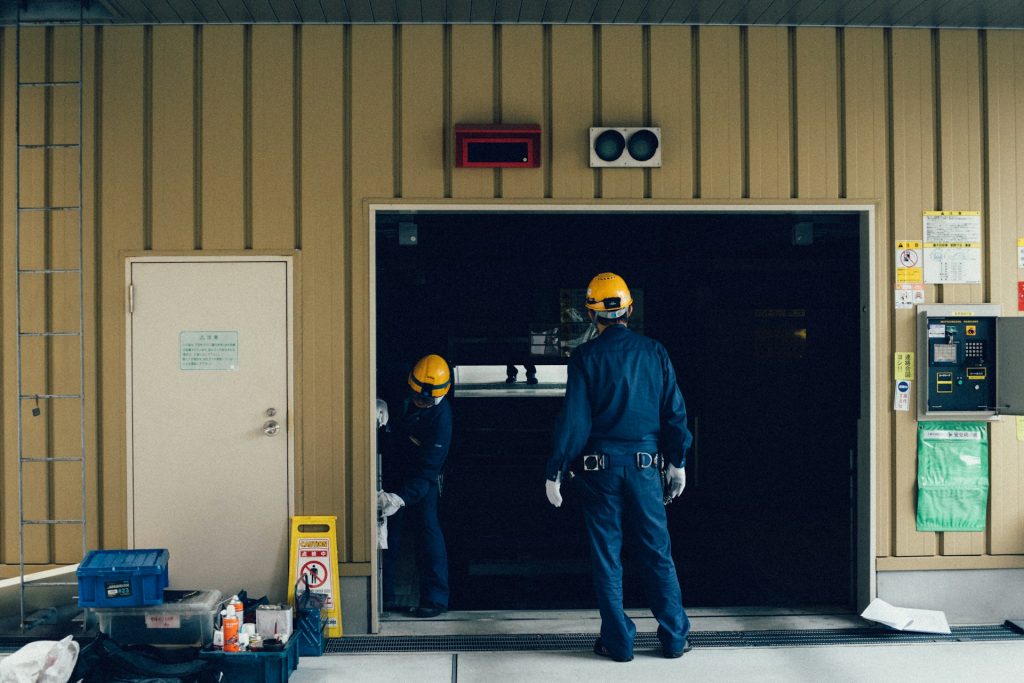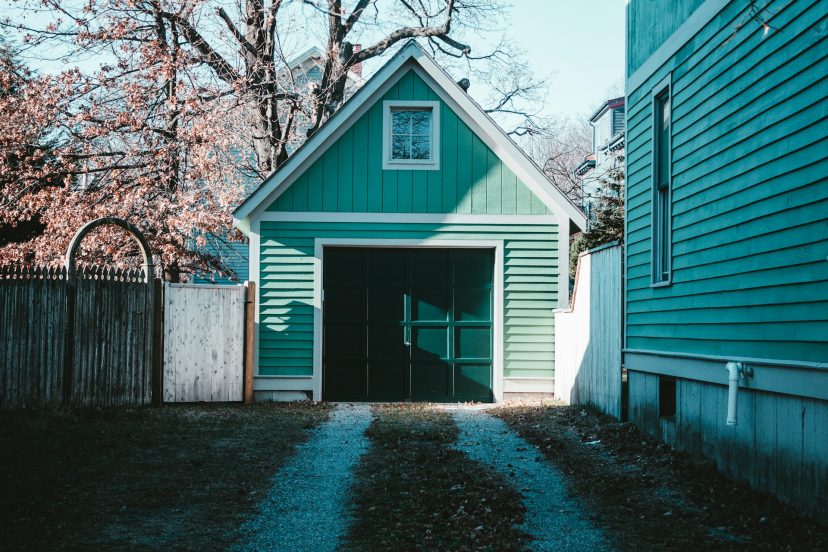Garage Door Won’t Close: Guide to Troubleshooting and Fixes
Garage doors are an integral part of our homes, providing security and convenience. But it can be a cause of frustration when your garage door won’t close. Over the years, I’ve encountered numerous issues with my own garage door. My experiences have taught me that many garage door issues are preventable with regular maintenance and a basic understanding of how these systems work. In this article, we’ll learn to troubleshoot and apply the necessary fixes for each problem. From sensor misalignments to track obstructions and electrical issues, we’ll explore a range of scenarios and their fixes.
Common Issues and Their Causes
Sensor Misalignment
One of the most common reasons a garage door won’t close is due to misaligned sensors. These safety sensors, located at the bottom of the door tracks, are designed to prevent the door from closing if an obstruction is detected. However, they can become misaligned due to accidental bumps or natural wear and tear. When misaligned, the sensors fail to communicate properly, falsely signaling an obstruction and preventing the door from closing. The alignment issue can often be visually identified – the sensors, typically equipped with small lights, will not illuminate correctly or may blink to indicate a problem. Correcting sensor alignment is usually a straightforward process of physically adjusting the sensors until their signals align and the lights indicate proper functioning.
Track Obstructions
Your garage door slides along tracks to open and close smoothly. However, these tracks can become obstructed by debris like leaves, stones, or even accumulated dirt and grime. Such obstructions can impede the door’s movement, causing it to stop or reverse direction before it fully closes. Regular inspection and cleaning of the tracks can prevent this issue. It’s also important to check for any dents or misalignments in the tracks themselves, as these can also hinder the door’s movement.
Faulty Remote Control
Sometimes, the issue isn’t with the garage door itself, but with the remote control used to operate it. Common problems with remote controls include dead batteries, damaged buttons, or loss of programming. Additionally, interference from other electronic devices can sometimes disrupt the signal between the remote and the garage door opener. Troubleshooting this issue involves checking and replacing the batteries, reprogramming the remote, or in some cases, replacing it entirely.
Wiring Issues
The garage door system relies on a network of wires to connect the door’s motor, sensors, and controls. Over time, these wires can become loose, frayed, or damaged due to various factors like weather, rodents, or simple wear and tear. Wiring issues can lead to intermittent or total failure of the garage door operation. Since dealing with electrical components can be dangerous, it’s advisable to consult a professional if you suspect wiring problems.
Weather-Related Problems
Garage doors can be sensitive to extreme weather conditions. In cold climates, ice and snow can accumulate around the door, hindering its movement. Metal components can contract in cold weather, causing misalignments or jamming. Conversely, in hot climates, expansion of metal parts can lead to similar issues. Maintaining a clean and clear area around the garage door and regularly lubricating moving parts can help mitigate weather-related problems. Adjusting the sensitivity of the garage door opener can also be effective in dealing with minor weather-induced changes.
Step-by-Step Troubleshooting Guide
1. Checking the Sensors
When your garage door refuses to close, the first checkpoint should be the safety sensors. These sensors are usually located on either side of the garage door near the floor. They work by sending a signal across the door opening, which, if interrupted, prevents the door from closing for safety reasons.
Start by gently wiping the lenses of the sensors with a soft, clean cloth to remove any dust, spider webs, or debris that might be blocking the signal. If cleaning doesn’t solve the problem, check for alignment issues. The sensors should be facing each other directly. If they seem off, gently adjust them until the LED lights on both sensors are solid, indicating proper alignment and connection. Lastly, check the tracks. The tracks guide the garage door as it opens and closes. Any issue with these tracks can cause the door to malfunction.
Garage Door Sensor on Amazon: Chamberlain 820CB Replacement Garage Door Safety Sensor
2. Clearing Obstructions
Look for any visible obstructions in the tracks such as stones, sticks, or accumulated dirt. Carefully remove them using a stiff brush. Then, check for any bends or damage to the tracks themselves. Minor bends can sometimes be gently tapped back into place, but significant damage may require professional repair.
3. Remote Control Maintenance
Remote control batteries typically last for 12 months. Replace the batteries if you think it’s time to be replaced. Weak batteries are a common cause of remote control failure. But if battery replacement doesn’t work, reprogramming the remote might be necessary. Consult your garage door opener’s manual for specific instructions on how to reprogram your remote. Also check the wiring. Faulty wiring can lead to serious issues with your garage door system.
Garage Door Opener Remote on Amazon: 2 for Chamberlain LiftMaster Craftsman Garage Door Opener Remote
4. Safety Precautions and Basic Checks
Always ensure that the power is turned off before inspecting the wiring to prevent electrical shock. Look for any obvious signs of damage like frayed wires, loose connections, or signs of rodent damage. If you spot any wiring issues, it’s best to call a professional. Working with electrical wiring requires expertise to avoid further damage or personal injury.
5. Dealing with Weather-Related Issues
Extreme temperatures and weather conditions can impact your garage door’s operation. Regularly lubricate all moving parts of the garage door to ensure smooth operation, especially in extreme weather conditions. Many garage door openers have sensitivity settings that can be adjusted. Consult the owner’s manual to learn how to adjust the sensitivity settings to compensate for temperature changes. Lastly, check and replace weather seals as needed to protect against weather extremes and ensure smooth operation.

When to Call a Professional
Identifying Complex Issues
While many garage door issues can be resolved with DIY methods, some problems require professional expertise. It’s crucial to recognize when an issue is beyond your skill level to avoid causing further damage or risking personal injury.
1. Mechanical Failures: If you encounter complex mechanical issues, such as a broken spring or a damaged door opener, it’s time to call a professional. These components require special tools and knowledge for safe and effective repair.
2. Electrical Problems: Any issue that involves the electrical system of your garage door, including wiring problems or opener malfunctions, should be handled by a qualified technician. Incorrect handling of electrical components can lead to dangerous situations.
Safety Considerations
Safety should always be your primary concern when dealing with garage door repairs.
1. Risk of Injury: Garage doors are heavy and operate under high tension, especially the springs. Attempting to repair these components without the proper tools and expertise can result in serious injury.
2. Electrical Safety: As previously mentioned, electrical repairs carry the risk of shock and should only be done by professionals.
3. Warranty Concerns: DIY repairs can sometimes void your garage door warranty. If your door is still under warranty, it’s best to let professionals handle the repairs.
Preventative Maintenance Tips
Regular Maintenance Schedule
Establishing a regular maintenance routine is key to prolonging the life of your garage door and preventing many common issues.
1. Monthly Inspection: Conduct a visual and auditory inspection of your garage door each month. Check for signs of wear and tear, listen for unusual noises, and ensure smooth operation.
2. Lubrication: Regularly lubricate all moving parts of the garage door, including hinges, rollers, and springs, with a garage door-specific lubricant.
3. Balance Test: Perform a balance test periodically. Disconnect the opener and manually open the door halfway. A well-balanced door will stay in place, while an unbalanced door will fall or rise.
DIY Tips for Garage Door Care
Here are some DIY tips that can help you maintain your garage door:
1. Keep Tracks Clean: Ensure the tracks on either side of the door are free from debris. This can be done using a brush and a mild household cleaner.
2. Tighten Up Hardware: The vibration of a moving garage door can loosen hardware over time. Periodically check and tighten all roller brackets and bolts.
3. Test Safety Features: Regularly test the garage door’s safety features, such as the auto-reverse mechanism, to ensure they are functioning correctly.
4. Inspect Weather Seals: Check the weather seals around the garage door for any signs of damage or wear and replace them as needed to keep the elements out.
Conclusion
As we wrap up this guide, it’s important to remember that while garage door issues can be frustrating, many of them are solvable with a bit of knowledge and effort. From sensor misalignments to track obstructions and electrical issues, understanding the common problems and how to address them can save time and money. However, it’s equally crucial to recognize when a problem is beyond your DIY capabilities. Safety should always be your priority, and seeking professional help when needed is a wise decision. Regular maintenance is the key to preventing many issues and ensuring the longevity and smooth operation of your garage door. I hope this guide has empowered you with the knowledge to confidently handle common garage door problems and maintain your door in top condition.
FAQs
1. What should I do if my garage door won’t close and there’s no obvious obstruction?
First, check the sensors for alignment and cleanliness. Misaligned or dirty sensors are often the cause of a garage door failing to close.
2. How often should I perform maintenance on my garage door?
It’s recommended to perform a basic maintenance check every month, including cleaning and lubricating moving parts, and a more thorough inspection annually.
3. Can I replace a broken garage door spring myself?
Replacing garage door springs can be very dangerous due to the high tension they are under. It is strongly recommended to hire a professional for this task.
4. Why does my garage door start to close and then reverse?
This is often a sign of misaligned sensors. The door assumes there is an obstruction and reverses as a safety precaution. Check and adjust your sensors to see if this resolves the issue.
5. How can I test the auto-reverse feature of my garage door?
Place a solid object, like a piece of wood, under the door and attempt to close it. The door should reverse upon hitting the object. If it doesn’t, contact a professional to adjust or repair the auto-reverse mechanism.




